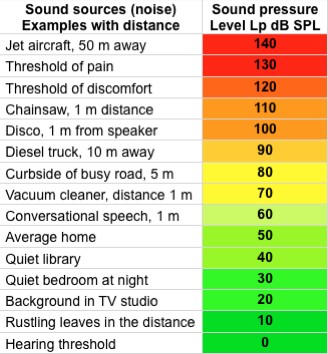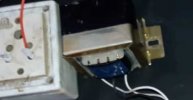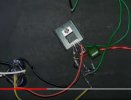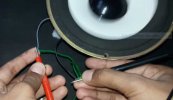Speaker out but into a load resistor, not a speaker, so the only sound was the resistor heating up as it absorbed the power and turned it into heat.You mean, not actually using speaker out ? just for the sake of measurement.
-
WANTED: Happy members who like to discuss audio and other topics related to our interest. Desire to learn and share knowledge of science required. There are many reviews of audio hardware and expert members to help answer your questions. Click here to have your audio equipment measured for free!
You are using an out of date browser. It may not display this or other websites correctly.
You should upgrade or use an alternative browser.
You should upgrade or use an alternative browser.
Watt for speaker and Watt for power consumption, Class D and AB
- Thread starter jst
- Start date
You can't really measure with speakers because they woudn't survive, and plus you might go deaf. The best you can do is have a load that better simulates a typical speaker, like in Stereophile amplifier reviews.You mean, not actually using speaker out ? just for the sake of measurement.
jst
Active Member
- Joined
- Aug 8, 2021
- Messages
- 134
- Likes
- 39
- Thread Starter
- #84
Then why amplifiers are built with so high watts if our ears can't take it ? Like this Aiyima, using resistors amirm can produce high watts, but me, raindog did test and the watts were really really low, but the sound is loud and good enough.You can't really measure with speakers because they woudn't survive, and plus you might go deaf. The best you can do is have a load that better simulates a typical speaker, like in Stereophile amplifier reviews.
Also power consumption is low according to my kwh meter, and the current is even less than 0.1A, can I just use a 12v 1a adapter ?
And also using his AP and not a multimeter, so that the measurement is sensitive to AC and broadbanded across all relevant frequencies.Fortunately for Amir's ears, those measurements are into a resistor.
Rick "whose Trio SSVM AC microvolt meter is far more accurate at higher frequencies than his Fluke DVM" Denney
They can take it at lower frequencies for a brief period. Mostly the power needs to be there for musical peaks. Nonetheless many prefer that the amplifier can do full power continuously over full bandwidth.Then why amplifiers are built with so high watts if our ears can't take it ? Like this Aiyima, using resistors amirm can produce high watts, but me, raindog did test and the watts were really really low, but the sound is loud and good enough.
Also power consumption is low according to my kwh meter, and the current is even less than 0.1A, can I just use a 12v 1a adapter ?
Because they are using that power to fill out waveforms that may require very high voltage but hat don't last very long. Lots of amps can seem loud enough but still manage not to provide good fidelity for the loud transients and percussions in the music, when played loudly. The duty cycle for these peaks is far lower than when playing a test signal at high power.Then why amplifiers are built with so high watts if our ears can't take it ? Like this Aiyima, using resistors amirm can produce high watts, but me, raindog did test and the watts were really really low, but the sound is loud and good enough.
Also power consumption is low according to my kwh meter, and the current is even less than 0.1A, can I just use a 12v 1a adapter ?
Or, they are being used in large rooms with more distance to the listener. Or, outdoors with distance but without any room reinforcement.
Rick "music with a peak that is 20 dB over the average requires a hundred times the power to fill out the peak waveform than to play the average waveform" Denney
jst
Active Member
- Joined
- Aug 8, 2021
- Messages
- 134
- Likes
- 39
- Thread Starter
- #88
Random question : HOW LOUD IS A 100 WATT PER CHANNEL ?
because if a speaker is rated 90dB with 1 watt/ 1 meter it will increase 3db per 2x the watt
90db ~ 1 watt/m
93db ~ 2 watt/m
96db ~ 4 watt/m
99db ~ 8 watt/m
102db ~ 16 watt/m
105db ~32 watt/m
108db ~64 watt/m
probably 110db ~ 100 watt/m

So, how loud is 110db in a loudspeaker ? (not test tone, but real music because real music is lower than test tone)
I searched on youtube and can't find real example of someone doing 100 watt output to speaker. That's not much though need to output 20 Voltage to speaker, right ? 20*20/4ohm =100.
But this guy at minute 3 (watch it on youtube, just click the link), he outputted 12.8v to his speaker, it doesn't sound that loud. And the "amp" he's using is so simple , but he can output 12.8v into speaker while me and even raindog123 only outputted 0.7v, with Aiyima a07 32v5a
Or check these pictures I ss from his vid
this is his power source ( I use 32v5a)

this is his "AMPLIFIER" chip (I use tpa3255)

this is his speaker

and this is his measurement, outputing much more (12.1v) than me and raindog123 (0.7v)

because if a speaker is rated 90dB with 1 watt/ 1 meter it will increase 3db per 2x the watt
90db ~ 1 watt/m
93db ~ 2 watt/m
96db ~ 4 watt/m
99db ~ 8 watt/m
102db ~ 16 watt/m
105db ~32 watt/m
108db ~64 watt/m
probably 110db ~ 100 watt/m

So, how loud is 110db in a loudspeaker ? (not test tone, but real music because real music is lower than test tone)
I searched on youtube and can't find real example of someone doing 100 watt output to speaker. That's not much though need to output 20 Voltage to speaker, right ? 20*20/4ohm =100.
But this guy at minute 3 (watch it on youtube, just click the link), he outputted 12.8v to his speaker, it doesn't sound that loud. And the "amp" he's using is so simple , but he can output 12.8v into speaker while me and even raindog123 only outputted 0.7v, with Aiyima a07 32v5a
Or check these pictures I ss from his vid
this is his power source ( I use 32v5a)

this is his "AMPLIFIER" chip (I use tpa3255)

this is his speaker

and this is his measurement, outputing much more (12.1v) than me and raindog123 (0.7v)

Last edited:
Did you measure speakers resistance at the driver terminals, or the speaker binding post? If you measure at the speaker binding post and your speakers have woofer and tweeter then you only measuring resistance of the woofer only(most likely). The tweeter has a capacitor in series which will not let DC pass through, only AC(audio signal).I see, I usually only use Aiyima A07 at 9 o'clock, it's already too loud at times so that's the max watt I'll be getting then.
I'm getting a multimeter so I'll test it tomorrow how much voltage is running thru my speaker cable at 9'oclock volume.
Realtime I can be acquired using a clamp multimeter but it's quite expensive so I'll be using Resistance instead. The above example I posted shows that calculating P from known I or known R can result in more or less the same output.
But this is only calculating from adapter already owned, I'll just wait for the result and see whether I still want a meanwell lrs 350-48 after this. Or ask friar in other thread to do a test if he's willing coz he has 48v 7.5A industrial psu.
So, depending on the test audio signal used (which frequency) the crossover will allow the signal to go to the woofer or the tweeter, or both if the signal is right at the crossover frequency.
It is always better to use the current and voltage method to calculate power.
He is using a 50Hz audio signal which probably the driver is not able to reproduce properly, hence you don't listen it very loudly. But the woofer is moving like crazy. Playing that signal at that power longer might break it.Random question : HOW LOUD IS A 100 WATT PER CHANNEL ?
because if a speaker is rated 90dB with 1 watt/ 1 meter it will increase 3db per 2x the watt
90db ~ 1 watt/m
93db ~ 2 watt/m
96db ~ 4 watt/m
99db ~ 8 watt/m
102db ~ 16 watt/m
105db ~32 watt/m
108db ~64 watt/m
probably 110db ~ 100 watt/m

So, how loud is 110db in a loudspeaker ? (not test tone, but real music because real music is lower than test tone)
I searched on youtube and can't find real example of someone doing 100 watt output to speaker. That's not much though need to output 20 Voltage to speaker, right ? 20*20/4ohm =100.
But this guy at minute 3 (watch it on youtube, just click the link), he outputted 12.8v to his speaker, it doesn't sound that loud. And the "amp" he's using is so simple , but he can output 12.8v into speaker while me and even raindog123 only outputted 0.7v, with Aiyima a07 32v5a
Or check these pictures I ss from his vid
this is his power source ( I use 32v5a)
View attachment 161047
this is his "AMPLIFIER" chip (I use tpa3255)
View attachment 161050
this is his speaker
View attachment 161048
and this is his measurement, outputing much more (12.1v) than me and raindog123 (0.7v)
View attachment 161049
If the guy was supposed to use a 1kHz tone instead , he might be deaf by now.
That's right.Result is weird I only get 1.9v-2.0v
Multimeter black is put at COM, red at VΩmA, setting is ACV 200.
Then play Sinewave 50Hz, black to speaker negative, red to speaker positive.
lcd shows 1.9-2.0 , how come it's that low ?
Speaker resistance varies from 6.8-7.8Ω
2V^2/8ohms(impedance)=0.5W.
Cheers.
The amplifier consumes 5-6W in quiescent state itself. That means only 1-2 Wats are really audio output power.I have given the wrong impression. I do not own an Aiyima A07. If you were reading 0.06A at 120V, that's 7.2W. There would be some losses and maybe a bit of phase shift. 3.2W per channel sounds reasonable. Remember that is the average. Your meter will average it's measurements. There could be lots of peaks at 10 or 20W but the might only last 100ms or so.
That's the multi-million dollar question.Then why amplifiers are built with so high watts if our ears can't take it ? Like this Aiyima, using resistors amirm can produce high watts, but me, raindog did test and the watts were really really low, but the sound is loud and good enough.
Also power consumption is low according to my kwh meter, and the current is even less than 0.1A, can I just use a 12v 1a adapter ?
And no for the TPA3255 Aiyima A07 . It requires minimum 18V, (the TPA3251 Aiyima A04 can work with 12V). You can use a 18V 1A power supply. You will be using 5-6W on the amplifier itself and power losses, plus 2W (1W/ch) And you still have room for more power before loading the power supply at 100% or 18W (which is not recommended, 50-70% is recommended)
Last edited:
Similar threads
- Replies
- 2
- Views
- 362
- Replies
- 5
- Views
- 578
- Replies
- 18
- Views
- 1K
- Replies
- 23
- Views
- 1K
